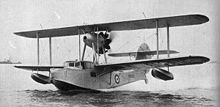Reginald Mitchell
- Birth Date:
- 20.05.1895
- Death date:
- 11.06.1937
- Length of life:
- 42
- Days since birth:
- 47429
- Years since birth:
- 129
- Days since death:
- 32066
- Years since death:
- 87
- Person's maiden name:
- Reginald Joseph Mitchell
- Extra names:
- Реджинальд Джозеф Митчелл, Reginald Joseph Mitchell
- Categories:
- Engineer
- Cemetery:
- Set cemetery
Reginald Joseph Mitchell CBE, FRAeS, (20 May 1895 - 11 June 1937) was a British aeronautical engineer, working for Supermarine and then Vickers. Between 1920 and 1936 he designed many aircraft, including light aircraft, fighters, bombers and flying boats. He is best remembered for his work on a series of racing aircraft, which culminated in the Supermarine S.6B and the Supermarine Spitfire fighter.
Early life
R.J. Mitchell was born at 115 Congleton Road, Butt Lane, Kidsgrove, Staffordshire, England.[2] After leaving Hanley High School at the age of 16 he gained an apprenticeship at Kerr Stuart & Co. of Fenton, a locomotive engineering works. At the end of his apprenticeship he worked in the drawing office at Kerr Stuart and studied engineering and mathematics at night school.
Early career

![]()
Supermarine Walrus (1935)
In 1917, he joined the Supermarine Aviation Works at Southampton. Advancing quickly within the company, Mitchell was appointed Chief Designer in 1919.[1] He was made Chief Engineer in 1920 and Technical Director in 1927. He was so highly regarded that, when Vickers took over Supermarine in 1928, one of the conditions was that Mitchell stay as a designer for the next five years.
Between 1920 and 1936, Mitchell designed 24 aircraft including light aircraft, fighters and bombers. As Supermarine was primarily a seaplane manufacturer, this included a number of flying boats such as the Supermarine Sea Eagle, the Supermarine Sea King, the Supermarine Walrusand Supermarine Stranraer. However, he is best remembered for his work on a series of racing aircraft, which culminated in the Supermarine S.6B, and the famous Supermarine Spitfire fighter.
The S.6B was a British racing seaplane developed by Mitchell for the Supermarine company to take part in the Schneider Trophy competition of 1931. The S.6B marked the culmination of Mitchell's quest to "perfect the design of the racing seaplane" and was the last in the line of racing seaplanes developed by Supermarine that followed the S.4, S.5 and the Supermarine S.6. The S.6B won the Trophy in 1931 and later broke the world air speed record.
Mitchell was awarded the CBE in 1932 for his contribution to high-speed flight.
Supermarine Spitfire Fighter
In 1931 the Air Ministry issued specification F7/30 for a fighter aircraft to replace the Gloster Gauntlet. Mitchell's proposed design, the Type 224 was one of three designs for which the Air Ministry ordered prototypes.

![]()
Supermarine Spitfire Mk.XIX (2008)
It first flew on 19 February 1934, but was eventually rejected by the RAF because of its unsatisfactory performance. While the 224 was being built, Mitchell was authorised by Supermarine in 1933 to proceed with a new design, the Type 300, an all-metal monoplane that would become the Supermarine Spitfire. This was originally a private venture by Supermarine, but the RAF quickly became interested and the Air Ministry financed a prototype.
Many of the technical advances in the Spitfire had been made by others: the thin elliptical wings were designed by the Canadian aerodynamicist, Beverley Shenstone, and shared some similarities with the Heinkel He 70 Blitz; the under-wing radiators had been designed by the RAE, whilemonocoque construction had been first developed in the United States. Mitchell's genius was bringing it all together with his experience of high speed flight and the Type 224.
The first prototype Spitfire, serial K5054, flew for the first time on 5 March 1936 at Eastleigh, Hampshire. In later tests, it reached 349 mph, consequently, before the prototype had completed its official trials, the RAF ordered 310 production Spitfires. Mitchell is reported to have said that "Spitfire was just the sort of bloody silly name they would choose."
Later years
In August 1933, Mitchell underwent a colostomy to treat rectal cancer. Despite this, he continued to work, not only on the Spitfire, but also on a four-engined bomber, the Type 317. Unusually for an aircraft designer in those days, he took flying lessons and got his pilot's licence in July 1934.
In 1936 cancer was diagnosed again, and subsequently, in early 1937, Mitchell gave up work, although he was often seen watching the Spitfire being tested. Mitchell went to the American Foundation in Vienna for a month, but died on 11 June 1937 at age 42. His ashes were interred at South Stoneham Cemetery, Hampshire four days later.
Mitchell was succeeded as Chief Designer at Supermarine by Joseph Smith, who was responsible for the further development of the Spitfire. Nevertheless, Mitchell's design was so sound that the Spitfire was continually improved throughout the Second World War. Over 22,000 Spitfires and derivatives were built.
Personal life
In 1918, Mitchell married Florence Dayson. They had a son, Gordon. While working on the Spitfire at Woolston and Eastleigh, Mitchell and family lived in Portswood, Southampton, at 2 Russell Place.
Mitchell's family
Mitchell's son, Dr. Gordon Mitchell (1920–2009) was left to tell his father's story in two books, R.J. Mitchell: World Famous Aircraft Designer and R.J.Mitchell: Schooldays to Spitfire. On 5 March 2004, Dr. Mitchell unveiled a 3/4 scale representation of the prototype Spitfire K5054 at the entrance to Eastleigh Airport, Southampton, on the 68th anniversary of its first flight. Gordon spent most of his life living in Tilehurst near Reading with his wife Alison and his three children (Penny, Adrian and David). Penny has two children, Nick and Emma. Alison died in 2005, and Gordon died on 24 July 2009 in Cheltenham General Hospital.
Source: wikipedia.org

